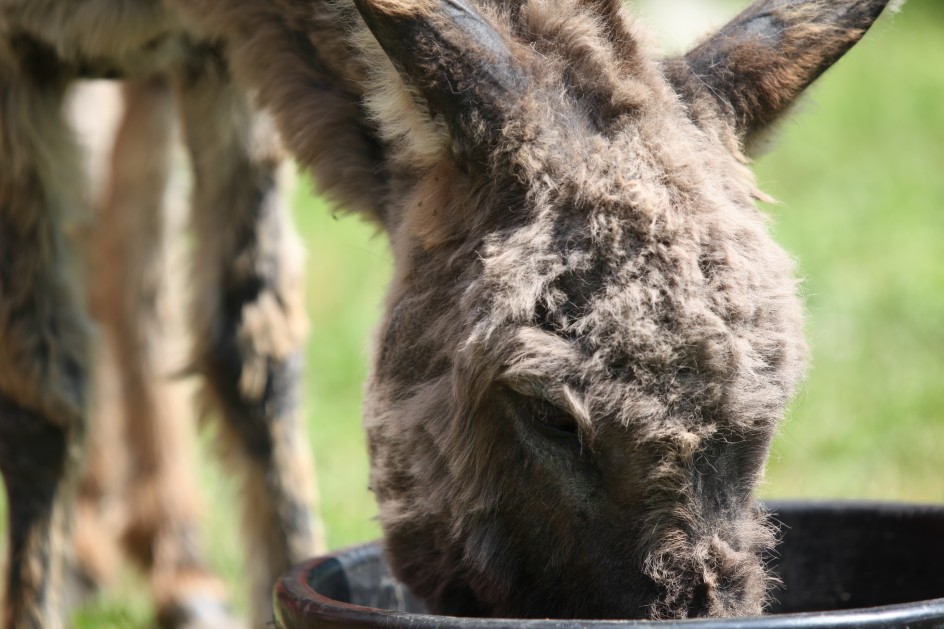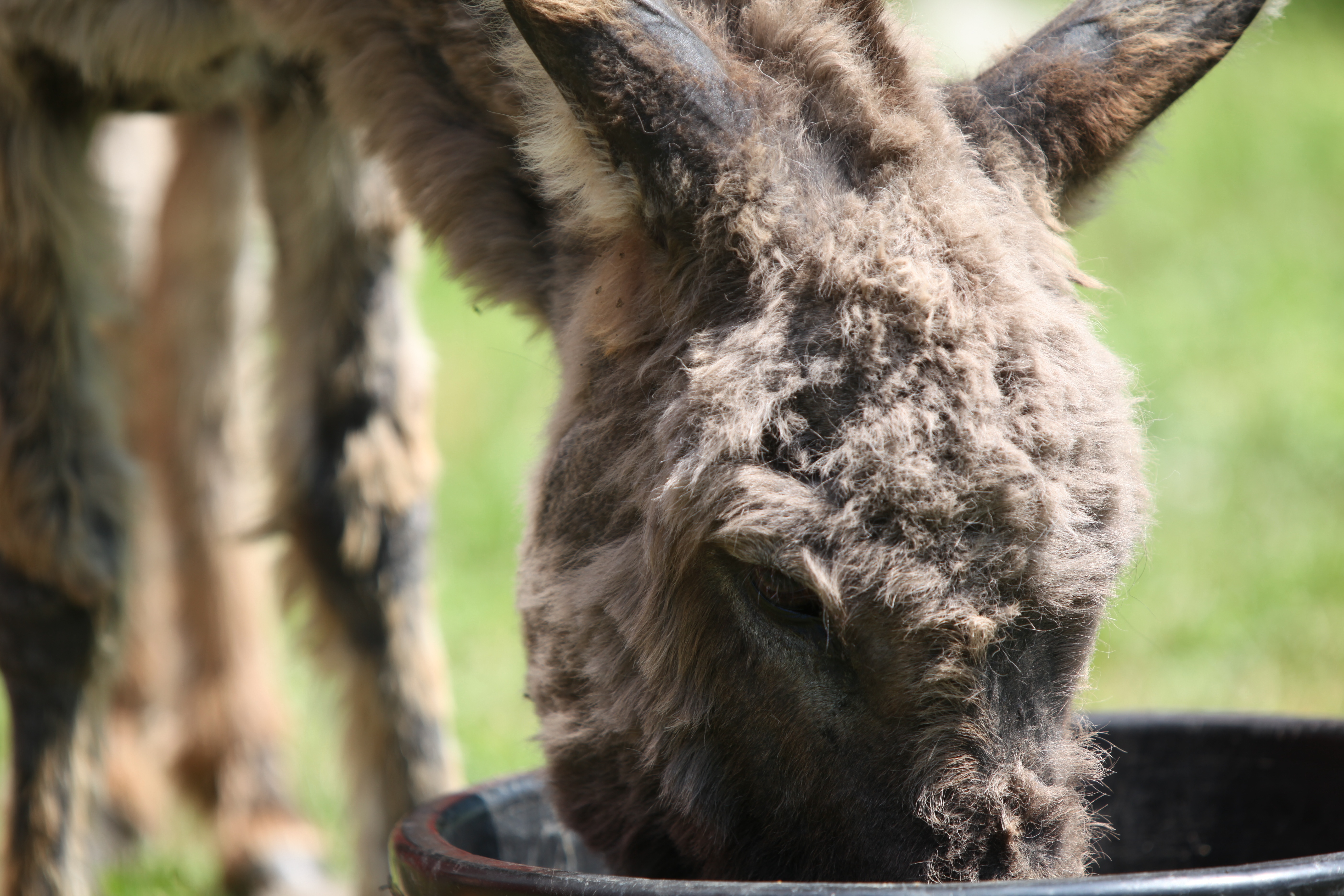
Simon has been with us for nearly three years and I have begun work on a book about our time with him – Simon’s coming, Rocky, Red. I was determined to record Simon’s arrival – we all considered putting him down, his wounds and suffering were so severe. Maria and I worked very hard on Simon. His teeth needed work, Ken Norman, the farrier worked on his legs and hooves, he needed balms and ointments for lice, sores, rain rot, infections, bites that were probably from rats, grain, ointments, balms. His eyes were swollen and infected, and I think it was awhile before he could hear. He was weak and numb, hardly able to move, and starved nearly to death. After a few days, it was clear to us that Simon wanted to live. Looking at the photos, I felt a powerful sadness, I’ve never known quite how to feel about Simon.
Donkeys are mythic creatures, among the most spiritual, worked and abused creatures on the planet. Because they are gentle and accepting, it is easy to mistreat them, and it seems to be a part of human nature to destroy and mistreat animals as well as to love and cherish them. Thomas Aquinas always wrote the reason we needed to be good to animals is that it is a measure of our own humanity, our own evolution. I have always felt as bad for the farmer and his child as I did for Simon. No one will come to rescue them.
Simon from the first evoked those horrific images of concentration camp survivors, he was barely a skeleton, it was some time before he had the strength or confidence to walk far. He was a testament to the damaged human soul. Maria says we connected from the first, Simon and I, that the shock of seeing and caring for him opened me up. We have a connection for sure.
I didn’t want to put up the most graphic photos – too painful for me, perhaps as well as for you. You can see the rain rot on his ears and skin, his skeletal frame. That’s enough really, I think. Simon is filled out, happy and healed. He has bad legs still twisted and will perhaps always be that way, says Ken Norman, but otherwise healthy and strong. He is generous, he is always happy to see people, he carries no grudges. As we learned with Rocky, he can be possessive and territorial, aggressive defending Lulu and Fanny, she sheep, our chickens or his food. I am grateful to Simon. He did open me up. He did challenge me to be more human. Maria and I took to healing him as if he were a child of ours, and I suppose in so many ways he is.
I do not call Simon a rescue donkey or think of him in that way, nor does he think of himself in that way I am sure. He is a character, smart, loving, difficult, stubborn, intuitive. He is a donkey. I kiss him on the nose every day of his life and whenever he sees me, he lets out a bray that can be heard for miles (so my neighbors tell me.) My choice is this: I can either be angry on his behalf or grateful for his appearance in my life. In the Spring, I will resume my halter walks with Simon, two asses in the road. We will go behind the farmhouse and off into the woods. I have always loved reading about those strange writers who talk to donkeys, they have written some lovely books. Hopefully, I can do as well.

